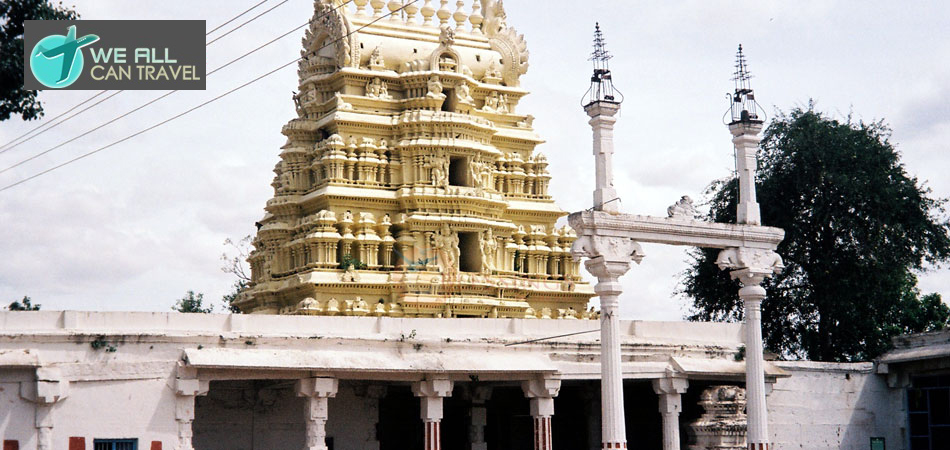- +1 416-553-8499
- Live chat
-
Chennakeshava Temple
- Home
- /
- Temples
- /
- Karnataka
- /
- Chennakeshava Temple

Chennakeshava temple is an excellent example of Hoysala architecture. Chennakeshava temple is named after the beautiful (chenna) long-haired (keshava) form of Lord Krishna. The 6 foot Deity is standing on a three foot stand. The two upper hands hold a disc and conch, and the two lower ones hold a lotus and club.
Construction of this temple was started in 1116 AD and it took 103 years to complete. Built of grey green chlorite, this temple is covered with intricate sculptures, which include many scenes from the Ramayana and Mahabharata. To the left of the main shrine is a shrine dedicated to Kappe Chenniga Raya. There are two altars in this temple. The shrine facing east houses Kappe Chenniga Raya, and the one facing north houses Venugopala. Kappe Chenniga Raya received this name because a frog was found in a cavity in this Deity, after it was completed. This Deity was meant to be the main Deity of the temple, but because it had a cavity another Deity was brought from Bababuden Hill. There is another shrine dedicated to Soma nayaki that has a tower (vimana) over it. To the west of the main temple is a shrine dedicated to Lord Vishnu called Viranarayana.
The temple walls are 443 by 396 feet. The temple itself is 178 feet by 156 feet. There is a five storey gopuram over the main entrance. On either side of the main door are seven foot sculptures of Jaya and Vijaya. A tall stone pillar in the temple courtyard is balanced only by its center of gravity. Inside the temple hall, to the left of the main entrance, is an intricately carved pillar with many small carvings of Lord Narasimha. This pillar used to rotate. There is one panel left blank on the pillar. It is said that the carver wanted to challenge anyone to carve a more beautiful image of Lord Narasimha than what was already on the pillar. There are ten perforated screens on either side of the eastern entrance of the assembly hall. The screens to the right include the story of Vamana (Trivikrama) and Bali, the killing of Hiranyakasipu by Narasimha, and the killing of Kamsa by Krishna. The panels on the left hand side depict the churning of the ocean by the demigods and demons and Krishnas pastimes (fighting with the wrestler Canura, killing the elephant Kuvalayapida, and slaying Kamsa).
Other scenes depicted are from the Mahabharata and Ramayana. There is an inscription recording the date of erection of this temple in comemoration of Vishnuvardhanas victory over the Chola viceroy of Talkad. It is said that about this time, Vishnuvardhana was converted from Jainism into Vaishnavisrn by Sri Ramanujacharya. Behind the main temple is a temple dedicated to the goddess Lakshmi, the consort of Lord Channa Kesava
 >> Agasteeshwara Temple
>> Agasteeshwara Temple >> Anantha Padmanabhaswami Temple
>> Anantha Padmanabhaswami Temple >> Ananthasana Temple
>> Ananthasana Temple >> Annapoorneshwari Temple
>> Annapoorneshwari Temple >> Arunachaleshwar Temple
>> Arunachaleshwar Temple